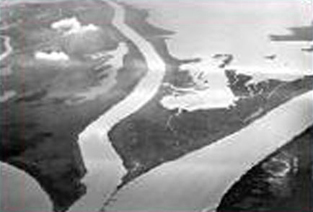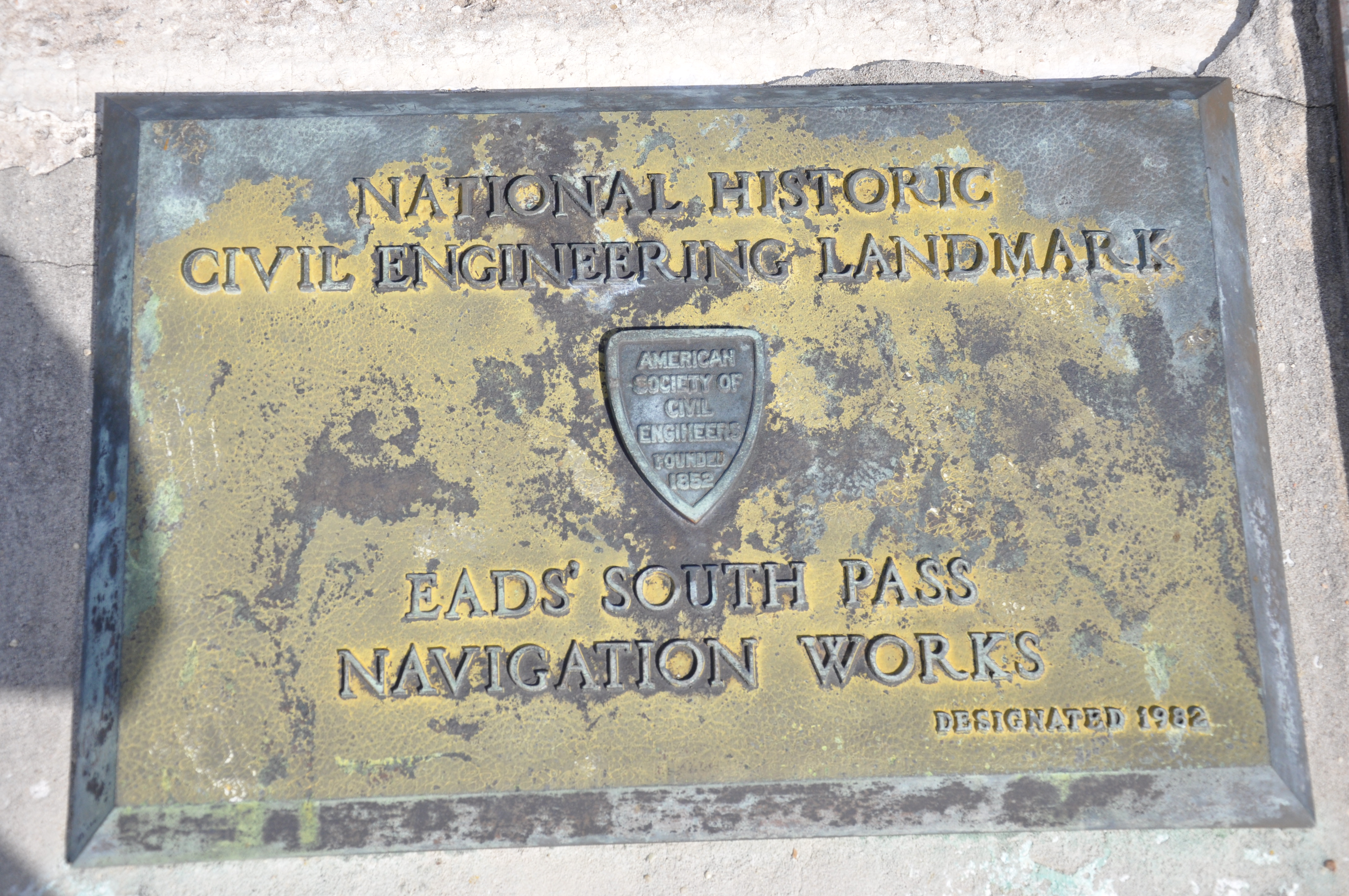Eads South Pass Navigation Works
28 59 50.0 N, 89 08 38.0 W

The Eads South Pass Navigation Works enabled the entire Mississippi River basin to have direct deep draught marine access to the oceans of the world. Today it is still a classic of hydraulic engineering.
"Eads had to succeed in the face of conventional wisdom which doomed him to disaster. Entrenched authorities not only completely dismissed his theories, but pointed to the indifferent European experiences with what he proposed."
- ASCE Landmark Nomination Proposal, 1982
The mighty Mississippi River has long been a valuable lifeline for the country's transportation and commerce. In the late 1800s, though, the mouth of the ever-changing Mississippi was silting up, creating areas as shallow as eight feet. Eads South Pass Navigation Works opened a channel at the mouth of the Mississippi River that allowed large boats easy access to the Port of New Orleans.
James Buchanan Eads created a self-scouring channel through the South Pass by constructing wing dikes, perpendicular to current flow, which forced the current into a narrower cross-section. The current scoured the river bottom, pushing the silt far out into the deep Gulf waters. This created a nearly permanent channel that required only periodic dredging to maintain navigability.
The channel is no longer maintained for deep-draft traffic due to a decline in maritime shipping. But the principles which guided construction on the South Pass made possible the high performance of the Southwest Pass, currently the predominant seaward approach to the ports of New Orleans and Baton Rouge.
Facts
- A T-dam at the head of the South Pass deepened the channel. He used wing dikes, perpendicular to current flow, to force the current into a narrower cross section, thus scouring the channel more completely.
- Sill dams of horizontal timber were placed at the mouth of the river to force the current to further scour the channel.
- Once pilings had been driven, mattresses of interwoven willow branches were submerged and attached to the pilings. Then alternating layers of broken stone and willow mattresses formed the base upon which a railroad line was constructed.
- Initially, the project was completed with funds furnished by Eads and a group of investors. Only if the design succeeded would Congress provide reimbursement.


